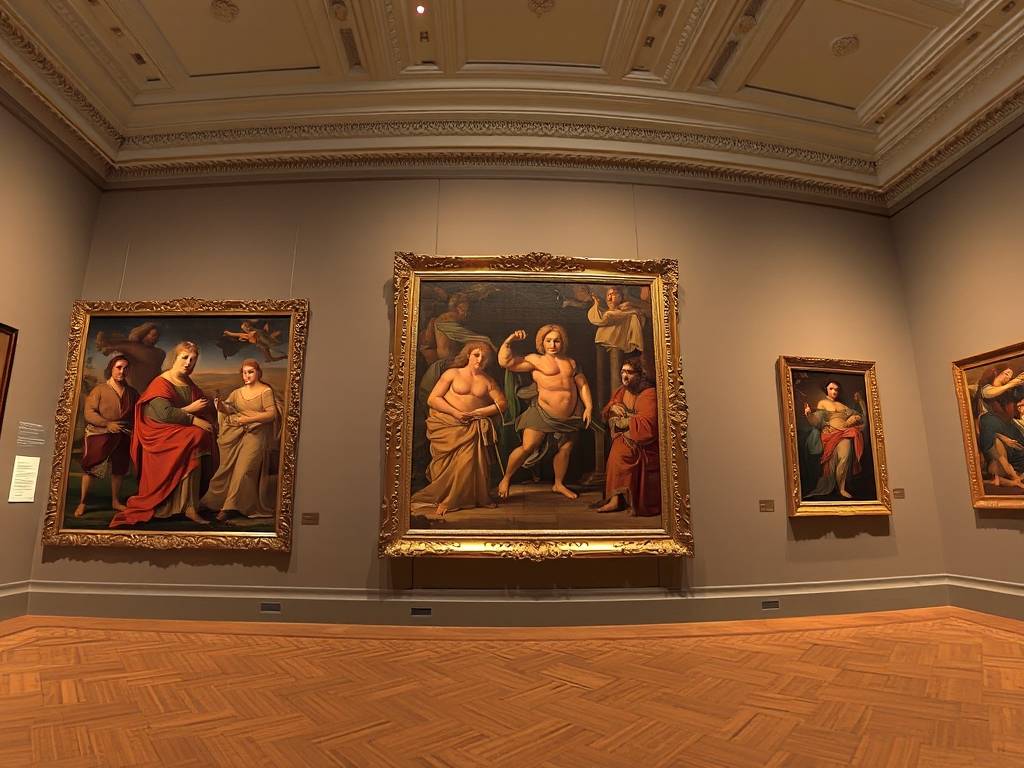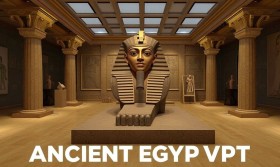Imagine standing before Leonardo da Vinci’s Mona Lisa, not through a screen or a page in a book, but as if you were in the same room. You notice the subtle shadows at the corner of her mouth, the delicate layers of glaze that create her famous smile, and the way the light in the gallery catches the texture of the aged canvas. Now, step back and turn to your right—there’s Titian’s Venus of Urbino, glowing with rich color. To your left, Botticelli’s The Birth of Venus seems to ripple with life. You are not in the Louvre, the Uffizi, or any physical museum. You are in the "Renaissance Masters Collection," a virtual reality art museum that brings together the world’s most treasured artworks into one accessible, deeply personal space. This is not a dream or a scene from science fiction; it is the emerging reality of how we experience art.
For centuries, appreciating the works of the Renaissance masters meant traveling to distant cities, navigating crowded galleries, and viewing masterpieces from behind ropes and through protective glass. The Mona Lisa is in Paris, The School of Athens is in the Vatican, and The Last Supper is in Milan. To see them all, one would need a considerable amount of time, money, and planning. For many art lovers, students, and people with mobility challenges, this has been an insurmountable barrier. The Renaissance Masters Collection in VR shatters these barriers. It is a meticulously curated digital environment where these scattered masterpieces are reunited, allowing you to wander through a virtual gallery dedicated solely to the brilliance of the 14th to 17th centuries.
The experience begins the moment you put on the VR headset. The world around you fades, and you find yourself in the grand atrium of a museum that seems to be made of light and marble. Soothing, ambient music mixed with the faint echoes of a simulated space puts you at ease. You look down and see a virtual floor; you raise your hands and see your controllers represented as elegant tools for navigation. The sense of presence is immediate and powerful. You are not just looking at pictures; you are in a museum. From this central hall, you can choose to enter different wings: "The Florentine Masters," "The Venetian Colorists," "The High Renaissance," and more. Each wing is architecturally distinct, reflecting the spirit of the art it houses.

Let's take a walk into the "High Renaissance" wing. The architecture shifts to evoke the grandeur of Rome and the Vatican. The ceilings are high, and the light streams in from virtual clerestory windows, illuminating the artworks in a way that feels both natural and divine. You approach Raphael’s The School of Athens. In a physical museum, you might be jostling for a view. Here, you have it all to yourself. The first thing you notice is the scale. The painting is rendered at its full, monumental size, something impossible to grasp from a textbook reproduction. You can stand back and take in the entire philosophical debate captured in the fresco, and then you can lean in—so close that you can see the individual brushstrokes and the craquelure, the fine network of cracks that history has left on the surface.
This ability to get closer than ever before is one of the most transformative aspects of the VR art museum. In the "Leonardo da Vinci" room, you can examine the Virgin of the Rocks in staggering detail. A gentle voiceover, activated by your gaze, explains Leonardo’s use of sfumato—the technique of blending colors and tones so subtly that there are no hard lines. As the narrator speaks, a soft highlight appears on the Virgin’s face, guiding your eye to the very areas where this technique is masterfully applied. You are not just being told about sfumato; you are being shown, in context, on the original work. This is where the VR museum transitions from a viewing platform to an educational powerhouse.
Interactivity is woven seamlessly into the experience. With a click of a controller, you can bring up an information panel next to any artwork. This panel can contain the painting’s history, a biography of the artist, technical analyses, and even related sketches or preparatory drawings. For instance, while looking at Michelangelo’s Sistine Chapel ceiling, you can select an option to see his original preparatory sketches for the figure of Adam, displayed side-by-side with the final fresco. This contextualizes the creative struggle and genius in a way that a wall label never could. Another powerful feature is the "comparison mode." You can summon two paintings from different artists to appear side-by-side. Imagine placing Masaccio’s The Tribute Money next to a work by his follower, Filippo Lippi. The influence and the evolution in the use of perspective and human emotion become immediately, visually apparent.
Perhaps the most emotionally resonant feature is the "restoration mode." Many of these masterpieces have been damaged, faded, or altered over time. The VR environment allows you to see a digital reconstruction of what the artwork might have looked like when it first left the artist’s studio. When you select this mode for Michelangelo’s David, the pristine, brightly polished marble statue appears before you, a stark contrast to the weathered version we know today. For Botticelli’s Primavera, the colors intensify, returning to the vibrant hues that have dimmed over five centuries. It’s a poignant journey back in time, a digital restoration that deepens our appreciation for the art’s original impact.
Accessibility is at the core of this virtual museum's mission. For individuals with physical disabilities who find travel difficult, this technology offers a liberating alternative. The museum experience can be customized—wheelchair users can adjust the default viewing height, and those with visual impairments can activate enhanced audio descriptions that go far beyond what is possible in a physical setting. Furthermore, the museum is not bound by opening hours. You can take a midnight stroll through the galleries, sit on a virtual bench in front of Caravaggio’s The Calling of St. Matthew, and contemplate the dramatic use of light for as long as you wish, without any pressure to move on.
For educators and students, the possibilities are endless. A teacher can guide an entire classroom through the galleries simultaneously in a shared virtual space. The teacher can act as a docent, leading students to specific paintings, highlighting details with a laser pointer tool, and facilitating discussions as if they were on a real field trip. This "virtual field trip" eliminates the cost and logistics of travel, making world-class art education available to schools anywhere in the world, regardless of their budget.
Some may wonder if a virtual experience can ever replace the aura of the original. The answer is that it doesn't seek to replace; it seeks to augment and provide access. The feeling of standing in front of the real Night Watch in the Rijksmuseum is unique and irreplaceable. However, for the vast majority of people who will never have that opportunity, the VR experience offers a profound and meaningful alternative. It provides a level of intimacy and understanding that can even enhance a future in-person visit, as you arrive already knowledgeable about the works' details and history.
The technology behind this is as fascinating as the experience itself. Using high-resolution gigapixel photography, each painting is captured in such detail that you can zoom in to see the weave of the canvas and the individual cracks in the varnish. 3D scanning and photogrammetry are used for sculptures, creating models that you can walk around and examine from every angle. The environment is built on a powerful game engine, ensuring smooth navigation and realistic lighting that mimics the careful curation of a world-class museum.
As we look to the future, the potential for VR art museums is boundless. The Renaissance Masters Collection could be just the beginning. Imagine collections dedicated to the Impressionists, ancient Egyptian art, or modern digital installations that are born in the virtual space. These museums could host live virtual openings, artist talks, and even collaborative art creation spaces. The very definition of a museum is expanding from a physical building to a dynamic, accessible, and ever-evolving digital universe.

The Renaissance was a rebirth of human potential, a explosion of creativity that reached for the heavens while remaining deeply rooted in the human experience. It is fitting that today, we are using one of our most advanced technologies to reconnect with that very spirit. The Renaissance Masters Collection in VR is more than a novelty; it is a new chapter in art appreciation. It returns a sense of wonder, intimacy, and personal discovery to the act of viewing a masterpiece. It invites you not to be a passive observer, but an active explorer in the endless landscape of human genius. So, the next time you wish to stand face-to-face with a Titan, to decipher the secrets of a Leonardo, or to bask in the harmony of a Raphael, know that the journey is now just a headset away. The doors to this universal museum are always open, waiting for you to step inside and see the old masters in a brilliant new light.



















